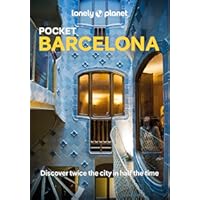The caves of Zugarramurdi, located just an hour from Pamplona in the valley of the River Baztán, are steeped in mystery and folklore. Known as the caves of the witches, they gained infamy in the 17th century when the Inquisition accused the villagers of practicing witchcraft. The surrounding forests, with their thick canopies of beech and oak, add to the eerie atmosphere. As you venture into the caves, you’ll discover that their history is as much about the local mythology as it is about the geological wonders. The most famous of these caves is the Sorginen Lezea, a vast cavern carved by the Olabidea stream, where it is said witches gathered to perform their rituals. Today, the caves are a peaceful place to visit, but they still retain a sense of mystery. Each year, on the eve of the summer solstice, the village hosts a Witches Day, where locals and visitors alike celebrate with traditional music, dancing, and storytelling around bonfires. The caves also feature a small museum that delves into the history of witchcraft in the region, offering fascinating insights into the blend of pagan beliefs and Christian traditions that once thrived here. The caves of Zugarramurdi are a reminder of Spain’s rich cultural tapestry, where ancient traditions and modern life coexist.
As you approach Zugarramurdi, the dense forests and rugged terrain create an almost mystical atmosphere. The village itself is charming, with its stone houses and narrow streets, but the real allure lies in the caves just outside the town. The most famous of these caves is the Sorginen Lezea, a vast cavern carved by the Olabidea stream, where it is said witches gathered to perform their rituals. The entrance of the cave is wide and inviting, and as you step inside, the temperature drops, and the air becomes damp and cool. It’s easy to imagine the eerie gatherings that once took place here, with the sound of drums and chants echoing off the limestone walls. The cave system is extensive, with several interconnected chambers and passages, some of which require a bit of scrambling to explore. The most famous chamber is the Akelarre, or Witches’ Sabbath, where the main rituals were said to have taken place. Today, the cave is a peaceful place to visit, but it still retains a sense of mystery. Each year, on the eve of the summer solstice, the village hosts a Witches Day, where locals and visitors alike celebrate with traditional music, dancing, and storytelling around bonfires. The event draws people from all over Spain, and it’s a wonderful way to experience the local culture and traditions. The caves also feature a small museum that delves into the history of witchcraft in the region, offering fascinating insights into the blend of pagan beliefs and Christian traditions that once thrived here. The museum is housed in a charming old building in the village, and it offers a wealth of information about the history of the region and its people. One of the most interesting exhibits is a series of panels that explain the different types of witchcraft practiced in the area, from healing spells to love potions. There are also displays of traditional witchcraft tools, such as cauldrons, brooms, and herbs, as well as more modern interpretations of witchcraft in popular culture. The museum also explores the darker side of the region’s history, with exhibits about the Inquisition and the infamous witch trials that took place here in the 17th century. These trials resulted in the execution of several villagers, and they left a lasting scar on the community. Today, the museum seeks to educate visitors about the true history of the region and to dispel some of the myths and misconceptions that have surrounded it for centuries. After exploring the caves and the museum, take some time to wander through the village. The streets are lined with charming cafes and shops selling local crafts and products. One of the highlights is the local cheese, a creamy, tangy variety made from sheep’s milk that is a specialty of the region. There are also several excellent restaurants serving traditional Basque cuisine, including hearty stews and grilled meats. For those interested in hiking, there are several trails that lead through the surrounding forests and hills, offering stunning views of the countryside. The area is also home to a variety of wildlife, including deer, wild boar, and a wide range of bird species. Whether you’re interested in history, nature, or just a bit of adventure, the caves of Zugarramurdi are a fascinating and unique destination that offers something for everyone.





